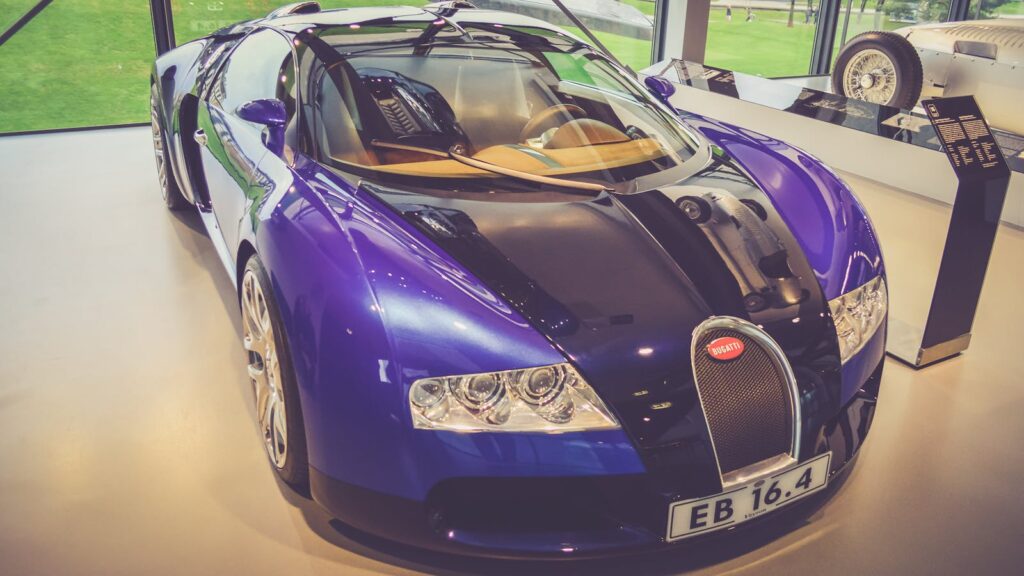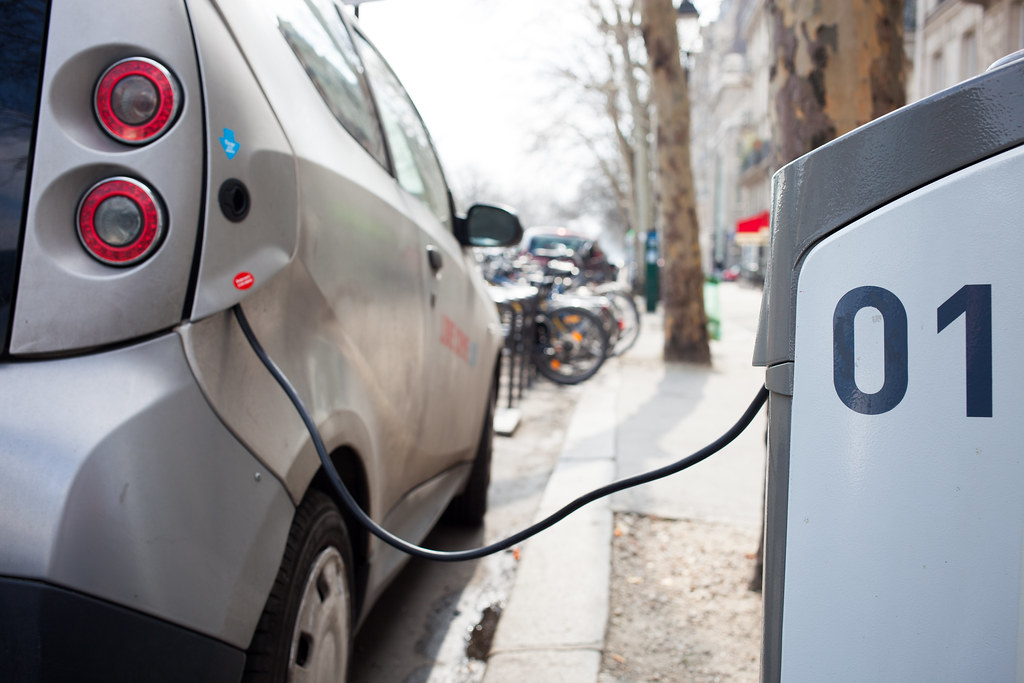
Alright, gearheads, petrolheads, and anyone who’s ever cursed a car that just refused to cooperate – settle in. We’ve all seen them, heard about them, or, heaven forbid, perhaps even owned one: cars that aren’t just ‘bad,’ but have transcended mere mechanical failure to achieve legendary status as automotive pariahs. These aren’t just vehicles with a few quirks; these are the machines that built reputations not for speed or style, but for sheer, unadulterated aggravation, earning them the moniker of ‘jerk cars’ in the collective consciousness.
This isn’t just about a poorly placed cupholder or a dashboard design that makes you scratch your head. We’re talking about cars that were critically panned, commercially bombed, or, even worse, led to public outcry due to safety hazards or abysmal reliability. From noble intentions gone horribly wrong to outright engineering blunders, these vehicles have carved out a special, often humorous, but always infamous, niche in automotive history. They’ve sparked debate, launched consumer advocacy, and some have even, bizarrely, garnered cult followings despite (or perhaps because of) their undeniable flaws.
So, buckle up, because we’re diving deep into the past to excavate some of the most notorious offenders. We’re starting our journey through automotive infamy with the first seven entries on our list, charting a course from post-war ambition to the nascent stages of the compact car revolution, revealing how each of these machines became a cautionary tale in the grand saga of the automobile. Prepare for a candid, no-holds-barred look at the cars that truly tested the patience and pocketbooks of drivers worldwide.
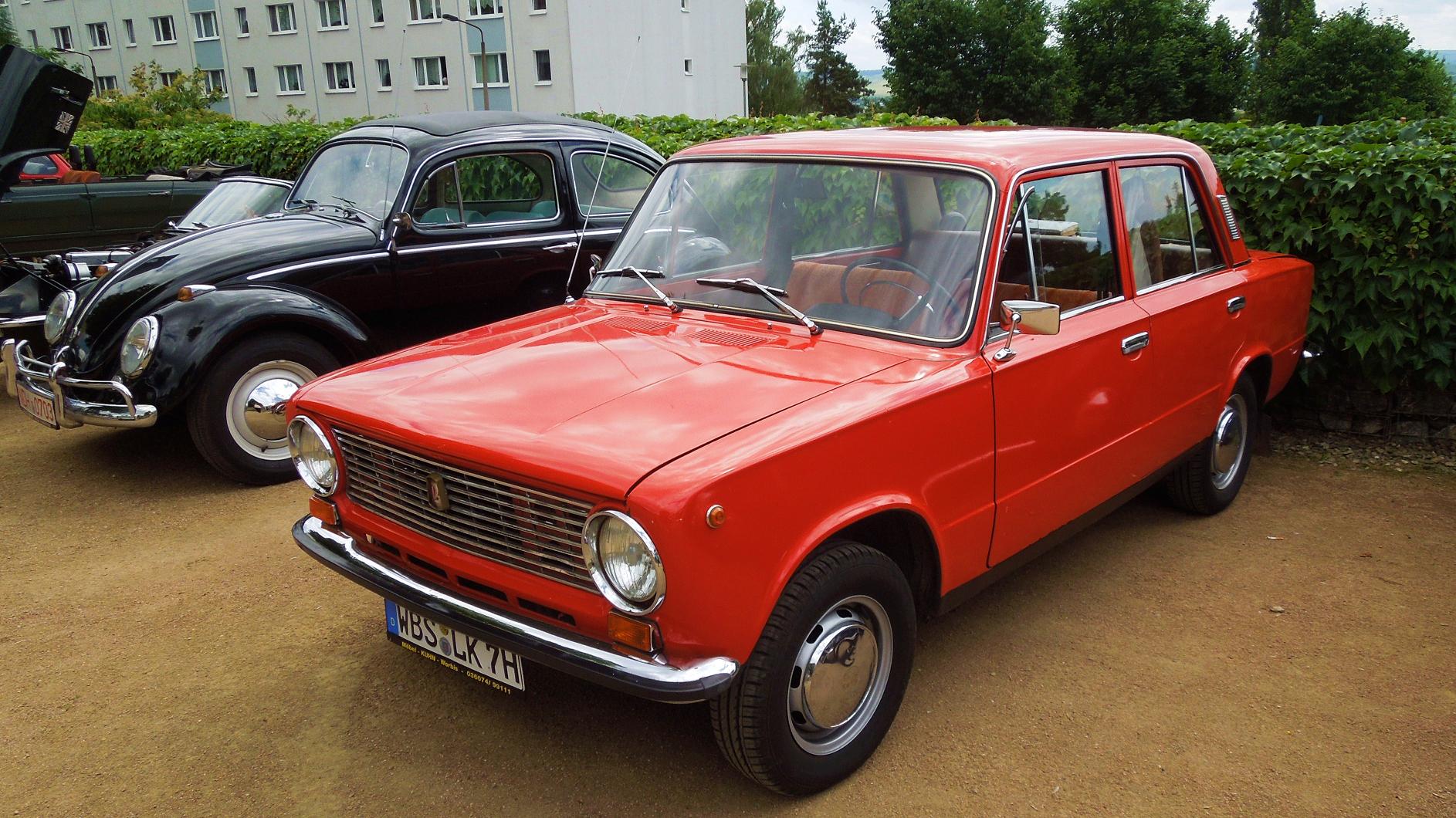
1. **Triumph Mayflower (1949–53)**Let’s kick things off with a car that truly tried to punch above its weight class, and ended up just punching itself in the face: the Triumph Mayflower. This was Triumph’s earnest attempt to crack the lucrative US market with a ‘luxury small car.’ The ambition was there, and they even shared components with the Standard Vanguard, sporting a motor based on the Standard Ten. What could possibly go wrong when you’re aiming for transatlantic appeal with a dash of British posh?
Well, the biggest blunder was arguably the styling. The Mayflower’s body was heavily inspired by the grand Rolls-Royce and Bentley luxury limousines of the era, particularly the Rolls-Royce Silver Dawn. But here’s the rub: they tried to miniaturize that opulent design onto a much smaller frame. The result? As Stuff.co.nz so aptly put it, “It always looked like the misshapen out of scale miniature of the larger, more elegant Renown model, viewed in the distorted reflection of a fairground mirror.” It was a luxury look, but shrunk, and in a way that just made the proportions look, shall we say, rather odd.
Beyond its polarizing aesthetics, the Mayflower suffered from some rather fundamental issues. Its body was notoriously heavy, a significant problem when paired with a rather small motor. This combination made the car severely underpowered and slow, barely wheezing its way to a top speed of 63 mph (101 km/h). James May, never one to mince words, famously declared it “the ugliest car ever built,” adding, “Its details are ugly, its overall proportions are ugly, its very concept – as a car to appeal to Americans who believed they were directly descended from the Pilgrim Fathers – makes one shudder.” Talk about a brutal assessment, but one that certainly resonated with many.
The Mayflower’s reputation was so cemented in automotive failure that it earned spots in the halls of shame, being featured in books like “The Worst Cars Ever Sold” by Giles Chapman, “Naff Motors: 101 Automotive Lemons” by Tony Davis, and “The World’s Worst Cars” by Craig Cheetham. Cheetham himself noted its bizarre appearance, saying it had “the appearance of a Rolls-Royce Phantom that had been chopped in the middle.” So, while it aimed for luxury, the Mayflower became less of a status symbol and more of a conversation starter for all the wrong reasons, setting a precedent for ‘jerk car’ design from the get-go.
Read more about: Lemon or Legend? The Definitive Takedown of 15 Cars That Should Have Stayed on the Drawing Board
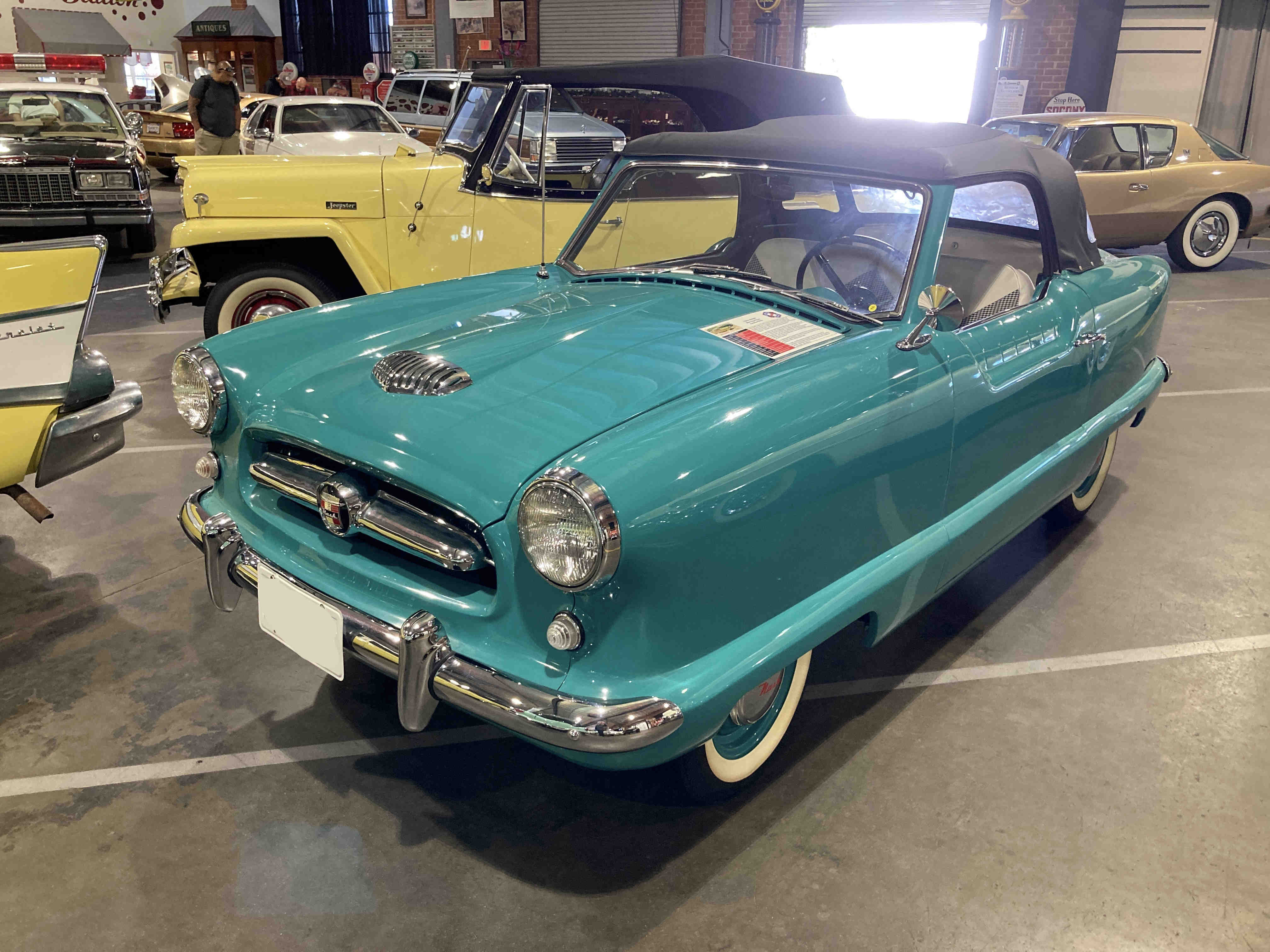
2. **Nash/Austin Metropolitan (1954–62)**If the Triumph Mayflower was an attempt at luxury in miniature, the Nash Metropolitan was perhaps the first true crack at a small, luxurious second car for the American market, particularly targeting women. Main developer George Mason envisioned it as “a big car in miniature,” a novel concept for US automakers who traditionally favored behemoths. It even had a pioneering international collaboration, developed by Nash and produced by British Austin Motors at their Longbridge plant, making it the first US-designed car entirely manufactured overseas.
Nash put considerable marketing muscle behind the Metropolitan, even advertising it as “a motorized shopping cart for affluent urban gals.” It was a clear attempt to tap into a new demographic and a perceived need for a more manageable vehicle in increasingly congested urban environments. However, despite these efforts, the car never quite clicked with the buying public and ultimately ended up as a commercial failure in the US.
The reasons for its downfall were multifaceted. Critics and owners alike pointed to its poor performance, often described as sluggish, coupled with poor handling that didn’t inspire confidence. Reliability issues also plagued the little car. More broadly, Nash misjudged the prevailing market trends in the US. Despite their belief that it was “exactly the car America needed,” rising prosperity was actually pushing American consumers towards bigger, full-size cars, leaving the tiny Metropolitan out in the cold. Even in Europe, where Austin sold it under its own brand, it struggled, moving only about 9,300 units.
Brian Sewell of The Independent didn’t hold back, calling it “one of the nastiest cars ever built.” Stuff.co.nz echoed this sentiment, including it on their list of “Cars that should never have been built,” stating it was “an abject failure being the worst of both worlds” by combining Nash styling with British small car mechanics. Money Inc. went further, listing it among the 20 worst cars ever made and branding it “One of the biggest bombs in automotive history.” While it has since gained a small, enthusiastic cult following, that initial reputation as a miniaturized misfit definitely cemented its place on our ‘jerk car’ roster.
Read more about: Lemon or Legend? The Definitive Takedown of 15 Cars That Should Have Stayed on the Drawing Board
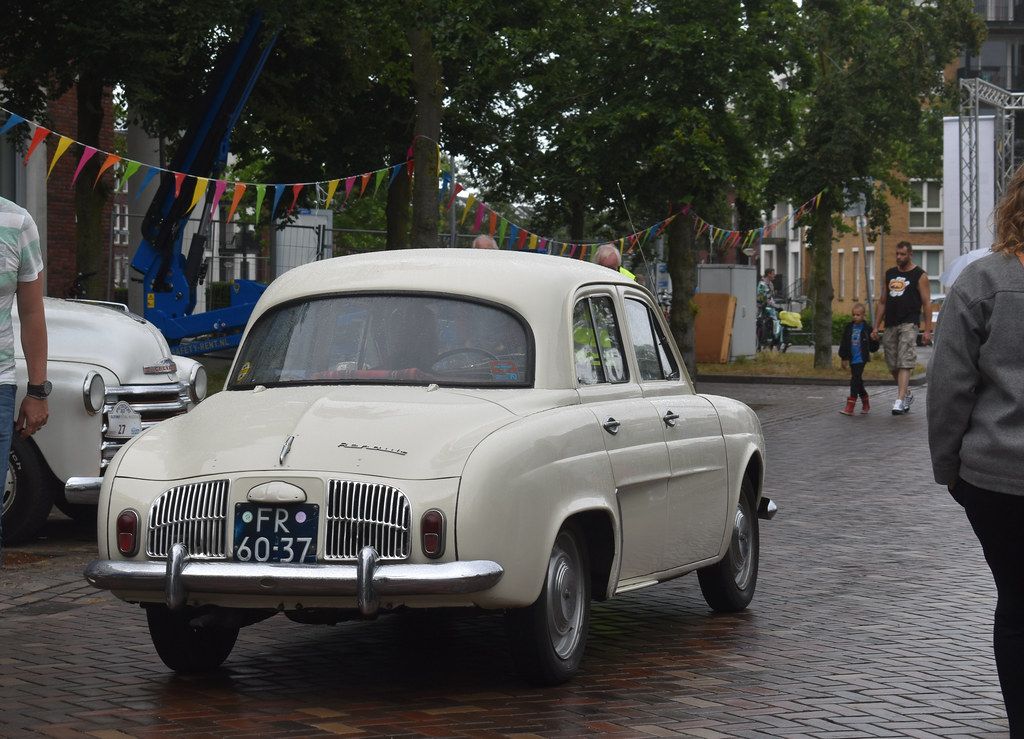
3. **Renault Dauphine (North American version) (1956–67)**Ah, the Renault Dauphine. In its home continent of Europe, this little French marvel was a genuine sales success, hailed as a forerunner of the modern economy car. It was charming, efficient, and perfectly suited to European roads and fuel prices. But then, it came to America. And that, my friends, is where the story takes a sharp, often hilarious, turn towards disaster, earning the North American version a spot on virtually every ‘worst cars’ list known to humanity.
The primary culprits for its stateside damnation were its utterly abysmal performance and truly horrifying reliability. Road & Track magazine, in a period review that must have been written with a heavy dose of disbelief, clocked the Dauphine taking a staggering 32 seconds to accelerate from a standstill to 60 mph. Let that sink in. Thirty-two seconds. As Dan Neil from Time’s “50 Worst Cars of All Time” list so famously quipped, this performance “put the Dauphine at a severe disadvantage in any drag race involving farm equipment.” He also branded it “The most ineffective bit of French engineering since the Maginot Line.” Ouch.
But the humiliation didn’t stop at glacial acceleration. The Dauphine had a deeply damaging Achilles’ heel: rust. A 2008 retrospective in The Independent paint a vivid picture: “as soon as the US market had come to grips with the Dauphine’s swing-axle manners and useless acceleration, they were pole-axed by its abysmal corrosion record. It would take only one New York winter of driving on salt-strewn roads to give a Dauphine front wings that resembled net curtains.” Imagine your brand new car dissolving before your very eyes!
The fallout was so severe that Renault, in a rare moment of corporate contrition, actually apologized for the Dauphine’s flaws in American print advertisements. They marketed its successor, the Renault 8, with the utterly brilliant, self-deprecating slogan: “The Renault for people who swore they wouldn’t buy another one.” That, folks, is how you know you’ve built a truly legendary ‘jerk car’ – when your next model’s main selling point is that it’s *not* its predecessor. It landed on Autoblog’s “The 20 Dumbest Cars of All Time” and Edmunds.com’s 67th worst car, firmly solidifying its negative legacy.
Read more about: Lemon or Legend? The Definitive Takedown of 15 Cars That Should Have Stayed on the Drawing Board

4. **Trabant (1957–90)**From the automotive embarrassment of post-war France, we pivot to the equally infamous, albeit for very different reasons, Trabant. Introduced in communist East Germany in 1957, the Trabant P50 and its later iteration, the 601, became less of a car and more of a wheeled symbol of economic stagnation and political ideology. Its story is less about engineering incompetence (though there was plenty of that) and more about the crushing realities of a planned economy.
Let’s talk specs, or rather, anti-specs. The Trabant clung to an outdated and wildly inefficient two-stroke engine, which was notorious for its poor fuel economy, pathetic power output (18 horsepower, folks!), and a thick, smoky exhaust plume that could clear a small village. Add to that a body made of ‘duroplast’ (a resin-infused cotton composite), and you had a car that was, by Western standards, an absolute relic even when new. It became an object of “derisive affection,” a rolling punchline that East Germans both depended on and bemoaned.
The fall of the Berlin Wall in 1989 provided one of the most poignant images of the Trabant’s place in history: thousands of East Germans streaming into West Berlin and West Germany in their trusty, smoky Trabants, abandoning them almost immediately upon reaching freedom. As Dan Neil pointed out, it was the car “that gave communism a bad name” and was “a hollow lie of a car constructed of recycled worthlessness.” The irony? These vehicles, symbols of deprivation, were then promptly ditched for anything with four strokes and a working heater.
Time magazine and Edmunds.com both placed the Trabant on their “worst cars” lists, with Edmunds.com specifically claiming it was “one more reason why Communism is evil.” Richard Porter, in his book “Crap Cars,” ranked it the 9th worst ever, declaring, “Before the old borders were broken down, us in the West thought we knew how harsh life was behind the Iron Curtain. Then we saw the Trabant. Oh, the humanity.” Despite (or perhaps because of) its objectively terrible qualities, the Trabant has found a peculiar second life as a cult icon, a nostalgic symbol of a bygone era. But don’t mistake nostalgia for quality – this was a true ‘jerk car’ born of necessity and compromise.
Car Model Information: 2025 Hyundai PALISADE XRT
Name: Trabant 601
Caption: Trabant 601 S, original condition (1988)
Manufacturer: VEB Sachsenring
Production: 1964–1990,2,818,547 built
Assembly: Zwickau
Class: Subcompact car
BodyStyle: 2-door saloon (“Limousine”),3-door estate (“Universal”),Doorless ATV (“Tramp”/”Kübel”)
Layout: Front-engine, front-wheel-drive layout
Platform: Trabant P601
Engine: Two-stroke engine,Straight-twin engine
Transmission: Saxomat,Semi-automatic transmission
Wheelbase: 2020 mm
Abbr: on
Length: 3555 mm
Width: 1505 mm
Height: 1440 mm
Weight: 615 kg
Predecessor: Trabant 600
Successor: Trabant 1.1
Sp: uk
Categories: 1960s cars, 1963 establishments in East Germany, 1970s cars, 1980s cars, 1990 disestablishments in East Germany
Summary: The Trabant 601 (or Trabant P601 series) is a Trabant model produced by VEB Sachsenring in Zwickau, Saxony. It was the third generation of the model, built for the longest production time, from 1964 to 1990. As a result, it is the best-known Trabant model and often referred to simply as the “Trabant” or “Trabi”. During this long production run, 2,818,547 Trabant 601 units were produced overall, and it was the most common vehicle in East Germany.
Get more information about: Trabant 601
Buying a high-performing used car >>>
Brand: Trabant Model: P50 and 601
Price: $40,788 Mileage: 5,081 mi.
Read more about: Lemon or Legend? The Definitive Takedown of 15 Cars That Should Have Stayed on the Drawing Board
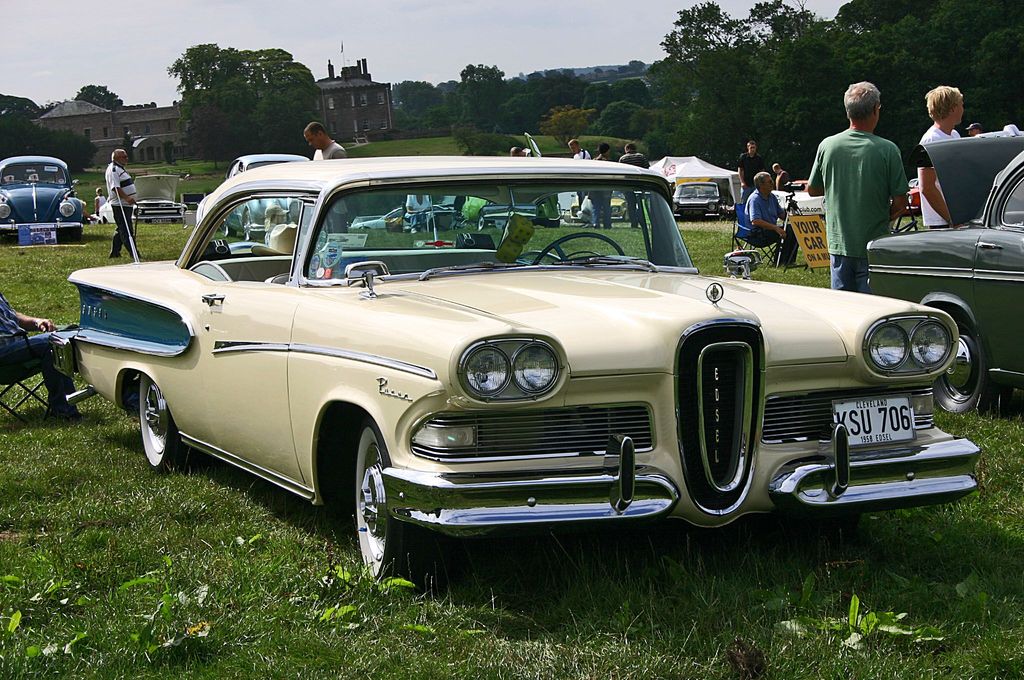
5. **Edsel (1958)**Now, let’s talk about a name that has become synonymous with commercial failure: the Edsel. This wasn’t some shoestring budget endeavor from a struggling manufacturer; this was a colossal, $400 million investment by the mighty Ford Motor Company. The aim? To slot a new brand between the entry-level Ford and the mid-priced Mercury, directly challenging General Motors’ Buick and Oldsmobile. The publicity machine was in overdrive, promising a radically different, innovative new car.
The problem wasn’t necessarily that the Edsel was intrinsically “bad,” as some, like Eric Peters in “Automotive Atrocities! The Cars We Love to Hate,” argued. He defended it, saying, “its resemblance to a chrome-splattered bus station urinal aside, at least the Edsel worked. Though hideous, you could count on the mechanicals underneath the skin, which were solidly Ford and thus as good as any other car of the era.” The Edsel did introduce features like self-adjusting brakes and automatic lubrication, which later became industry standards. However, the buying public felt duped; what they got was largely existing Ford and Mercury components wrapped in controversial sheet metal.
The marketing mavens at Ford had over-hyped the Edsel to an almost comical degree, leading the public to expect a “plutonium-powered, pancake-making wondercar,” as Dan Neil put it. What arrived was, well, a Mercury with an odd face. That odd face, particularly the infamous “horsecollar” grille, became a lightning rod for ridicule, frequently compared to a toilet seat, and later, even female genitalia. Sarcastic descriptions abounded, like it looked like “a Mercury pushing a toilet seat” or “an Oldsmobile sucking a lemon.” The tail lamps, too, were roasted for looking like “ingrowing toenails.”
But the grille, despite its infamy, wasn’t the sole architect of its downfall. Bad marketing and shockingly poor build quality (due to sharing production lines rather than having a dedicated one) played significant roles. Crucially, the Edsel launched straight into a recession, as American consumers began ditching large, medium-priced cars for smaller economy models like the Volkswagen Beetle. The financial losses, estimated between $250 million and $350 million, were devastating, bankrupting many Ford dealers. The Edsel didn’t just fail; it became the definitive ‘jerk car’ poster child for how *not* to launch a product, forever etching its name in the annals of commercial flops.
Car Model Information: 1958 Edsel Corsair
Name: Mercury
Logo: Mercury Logo (automobile company).svg
LogoSize: 150
Fate: Discontinued
Type: Division (business)
Foundation: [object Object]
Founder: Edsel Ford
Defunct: [object Object]
LocationCity: Dearborn, Michigan,Michigan
LocationCountry: U.S.
KeyPeople: Edsel Ford, founder
Industry: Automotive industry
Products: Automobile
Parent: Ford Motor Company
Categories: 1938 establishments in Michigan, 2011 disestablishments in the United States, All articles needing additional references, All articles with unsourced statements, American brands
Summary: Mercury was a brand of medium-priced automobiles that was produced by American manufacturer Ford Motor Company between the 1939 and 2011 motor years. Created by Edsel Ford in 1938, Mercury was established to bridge the gap between the Ford and Lincoln model lines within Ford Motor Company. From 1945 until its closure, it formed half of the Lincoln-Mercury Division of the company.
In addition to serving as a combined sales network for Ford’s two premium automotive brands, Lincoln-Mercury also represented the Continental (1956–1960), Edsel (1958–1960, formally designated Mercury-Edsel-Lincoln Division), Comet (1960–1961), Capri (1970-1978), De Tomaso (1972-1975), and Merkur (1985–1989, forming Lincoln-Mercury-Merkur). Through the use of platform sharing and manufacturing commonality, Mercury vehicles often shared components and engineering with Ford or Lincoln (or both concurrently), serving as counterparts for vehicles from both divisions.
Following an extended decline in sales and market share for Mercury, Ford announced the closure of the division at the end of 2010.
Get more information about: Mercury (automobile)
Buying a high-performing used car >>>
Brand: Edsel Model: Edsel
Price: Not Priced Mileage: 0 mi.
Read more about: 12 Automotive Disasters: The Most Infamous Cars
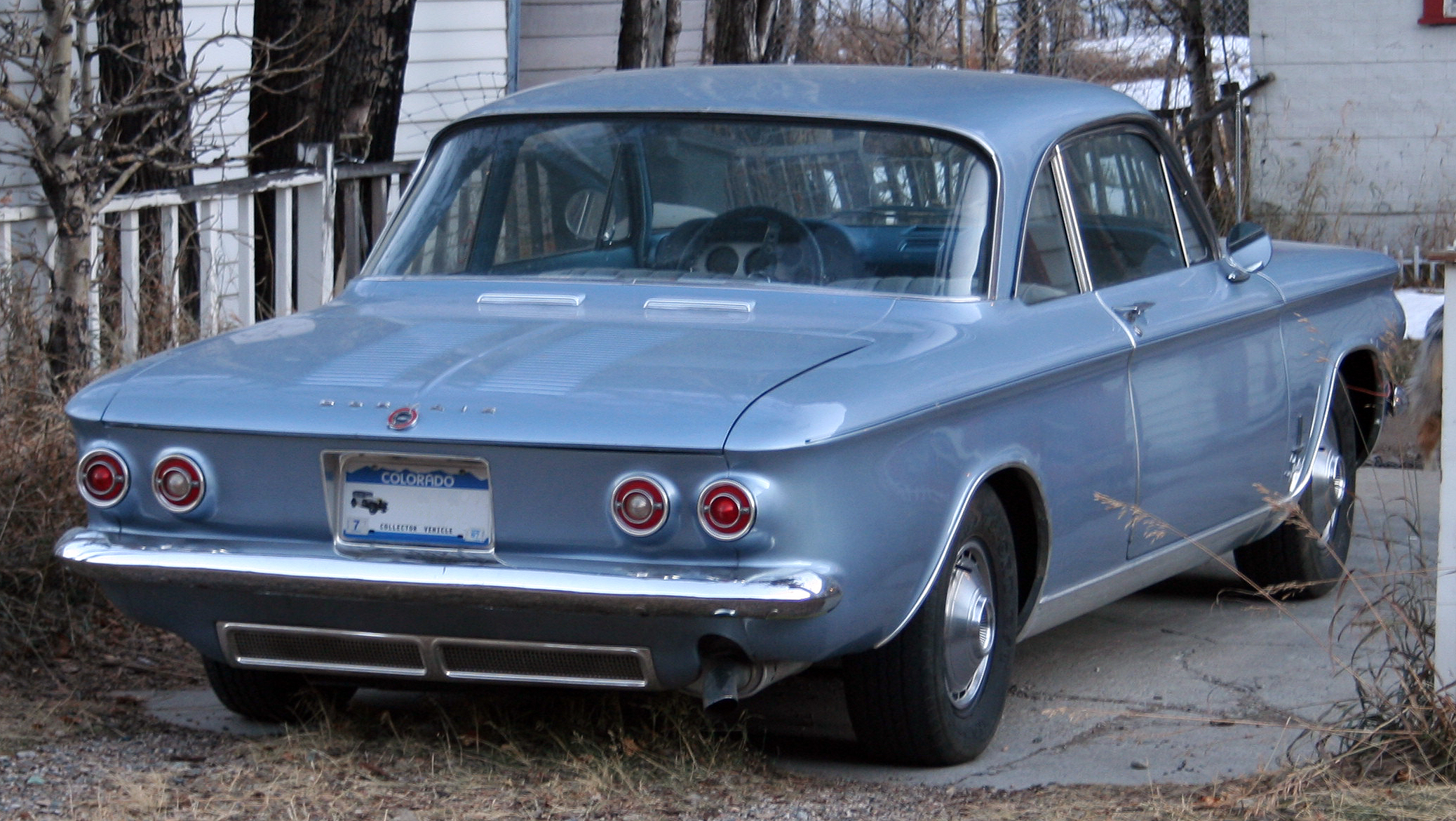
6. **Chevrolet Corvair (1960–64)**The Chevrolet Corvair is a complex beast in the ‘jerk car’ pantheon because, unlike many others on this list, it was initially popular and critically praised upon its launch. It was a stylish, compact car with a rear-engine, air-cooled layout that was a bold departure for GM. For a brief shining moment, it seemed like a winner. Then, the handling issues began to surface, specifically related to its swing-axle rear suspension, which led to a high number of highway accidents among drivers unfamiliar with its unique dynamics.
This is where the story truly descends into ‘jerk car’ infamy, largely thanks to consumer advocate Ralph Nader. His 1965 book, “Unsafe at Any Speed,” singled out the Corvair, shining a harsh spotlight on its safety flaws. The ensuing legal battles saw over 100 lawsuits filed against General Motors, and the negative publicity snowballed, especially when it was revealed that GM had deliberately omitted crucial suspension upgrades on the 1960-63 models for cost reasons, upgrades that would have significantly improved safety. These upgrades only made it into the 1964 model, and a full redesign came in 1965.
GM’s response to Nader was a masterclass in how *not* to handle a crisis. Their attempts to discredit him only backfired, generating even more negative press and public mistrust. As if that wasn’t enough, the Ford Mustang launched around the same time, providing fierce competition that further strained Corvair sales. CNN included the Corvair on its list of “The Ten Most Questionable Cars of All Time,” and Time magazine likewise put it on their “50 Worst Cars of All Time.” Dan Neil’s blunt assessment sums it up: “Chevrolet execs knew the Corvair was a handful, but they declined to spend the few dollars per car to make the swing-axle rear suspension more manageable. Ohhh, they came to regret that.”
The Corvair controversy wasn’t just about a problematic car; it was a watershed moment that directly led to the founding of the National Highway Traffic Safety Administration (NHTSA) and mandated safety testing in the United States. Ironically, a later NHTSA report concluded that a properly maintained Corvair handled comparably to its contemporaries. Yet, Nader’s point about GM’s cost-cutting was valid, as former GM executive John DeLorean and former Ford/Chrysler President Lee Iacocca both attested. The Truth About Cars site even named it a “deadly sin” that led to GM’s downfall, stating, “The Corvair was the product of GM’s repeated tendencies to go off in directions that were an engineer’s dream, but were either flawed from the initial concept, or diminished by the bean counters. In the case of the Corvair, it was both.” A true ‘jerk car’ by circumstance and corporate folly.
Car Model Information: 1966 Chevrolet Corvair
Caption: 1964 Chevrolet Corvair Monza
Name: Chevrolet Corvair
Manufacturer: Chevrolet
Production: July 1959
Platform: GM Z platform
Chassis: Unibody
ModelYears: 1960–1969
Assembly: United States,Kansas City, Missouri,Oakland, California,Van Nuys,St. Louis,Flint, Michigan,Belgium,Canada,Mexico,South Africa,Switzerland,Venezuela
Class: Compact car
Successor: Chevrolet Vega
Layout: Rear-engine, rear-wheel-drive layout
Categories: All Wikipedia articles written in American English, All articles lacking in-text citations, All articles needing additional references, All articles with dead external links, All articles with specifically marked weasel-worded phrases
Summary: The Chevrolet Corvair is a rear-engined, air-cooled compact car manufactured and marketed by Chevrolet over two generations from the 1960 through 1969 model years. The Corvair was a response to the increasing popularity of small, fuel-efficient automobiles, particularly the imported Volkswagen Beetle and American-built compacts like the Rambler American and Studebaker Lark.
The first generation (1960–1964) was offered in four-door sedan, two-door coupe, convertible, and four-door station wagon configurations. A two- and four-door hardtop, as well as a convertible, were available as second-generation variants (1965–1969). The Corvair platform was also offered as a subseries known as the Corvair 95 (1961–1965), which consisted of a passenger van, commercial van, and pickup truck variant. Total production was approximately 1.8 million vehicles from 1960 until 1969.
The name “Corvair” was first applied in 1954 to a Corvette-based concept with a hardtop fastback-styled roof, part of the Motorama traveling exhibition. When applied to the production models, the “air” part referenced the engine’s cooling system.
A prominent aspect of the Corvair’s legacy derives from controversy surrounding the handling of early models equipped with rear swing axles, articulated aggressively by Ralph Nader’s Unsafe at Any Speed but tempered by a 1972 Texas A&M University safety commission report for the National Highway Traffic Safety Administration (NHTSA) which found that the 1960–1963 Corvair possessed no greater potential for loss of control in extreme situations than contemporary compacts.
To better counter popular inexpensive subcompact competitors, notably the Beetle and Japanese imports such as the Datsun 510, GM replaced the Corvair with the more conventional Chevrolet Vega in 1970.
Get more information about: Chevrolet Corvair
Buying a high-performing used car >>>
Brand: Chevrolet Model: Corvair
Price: $15,000 Mileage: 65,743 mi.
Read more about: Lemon or Legend? The Definitive Takedown of 15 Cars That Should Have Stayed on the Drawing Board

7. **Hillman Imp (1963–76)**Our seventh entry brings us back to British shores, where the Hillman Imp, despite initially high hopes and positive media attention, quickly became a commercial catastrophe. Designed by the Rootes Group as a direct competitor to BMC’s wildly successful Mini, the Imp seemed promising on paper. It boasted a modern design, good road handling, and innovations like an all-aluminum engine block and an opening rear window with a folding backseat for decent luggage space. So far, so good, right?
Not quite. The Imp made a fundamental design choice that immediately put it at a disadvantage against the Mini: it adopted a rear-engine, rear-wheel-drive layout, while the Mini had already set the standard for compact cars with its space-efficient front-engine, front-wheel-drive setup. This alone was a questionable decision in the context of the evolving small car market. But the real nail in the coffin was an unforgivable combination of poor quality control and an underdeveloped design that was rushed into production.
The Linwood plant, purpose-built for the Imp, became synonymous with shoddy workmanship. Quality issues were rampant: frequent failures of gearboxes and water pumps, poor engine cooling that often led to overheating, and generally haphazard production quality with ill-fitting panels. It was a cascade of problems that swiftly tarnished the Imp’s reputation. Unsurprisingly, it never came close to matching the Mini’s sales figures, and its financial losses were so severe they almost bankrupted the Rootes Group, forcing a takeover by Chrysler in 1967.
The Hillman Imp’s legacy is one of profound disappointment. It was featured in “The Worst Cars Ever Sold” and “Naff Motors: 101 Automotive Lemons,” cementing its status as an automotive lemon. Askaprice.com named it among “The Five Worst English Cars of All Time,” and iMotormag ranked it the 5th worst British car. Hotcars.com placed it at #3 on its list of the 20 worst European cars. Despite remaining in production until 1976, the Imp’s initial promise dissolved into a litany of mechanical woes and financial disaster, making it a definitive ‘jerk car’ that contributed to the downfall of its parent company.
Alright, gearheads, strap in once more, because we’re not done digging through the automotive graveyard just yet. We’ve seen how post-war ambitions and early economy car efforts sometimes veered wildly off course, creating mechanical monstrosities and marketing misfires that became the stuff of legend. Now, we’re diving deeper into the annals of infamy, uncovering more automotive pariahs whose engineering blunders, safety crises, and marketing missteps cemented their place on our list of cars with truly bad driver reputations.
These aren’t just vehicles that missed the mark; they’re the ones that sparked public outcry, triggered governmental intervention, and in some cases, inspired entire new genres of comedic takedowns. From woefully underpowered imports to notorious fire hazards and vehicles that simply refused to stay together, prepare yourself for another candid, no-holds-barred look at the machines that tried, and spectacularly failed, to win the hearts (and wallets) of drivers. It’s time to meet the next batch of contenders for the ‘jerk car’ hall of shame, picking up right where we left off.
Read more about: Lemon or Legend? The Definitive Takedown of 15 Cars That Should Have Stayed on the Drawing Board
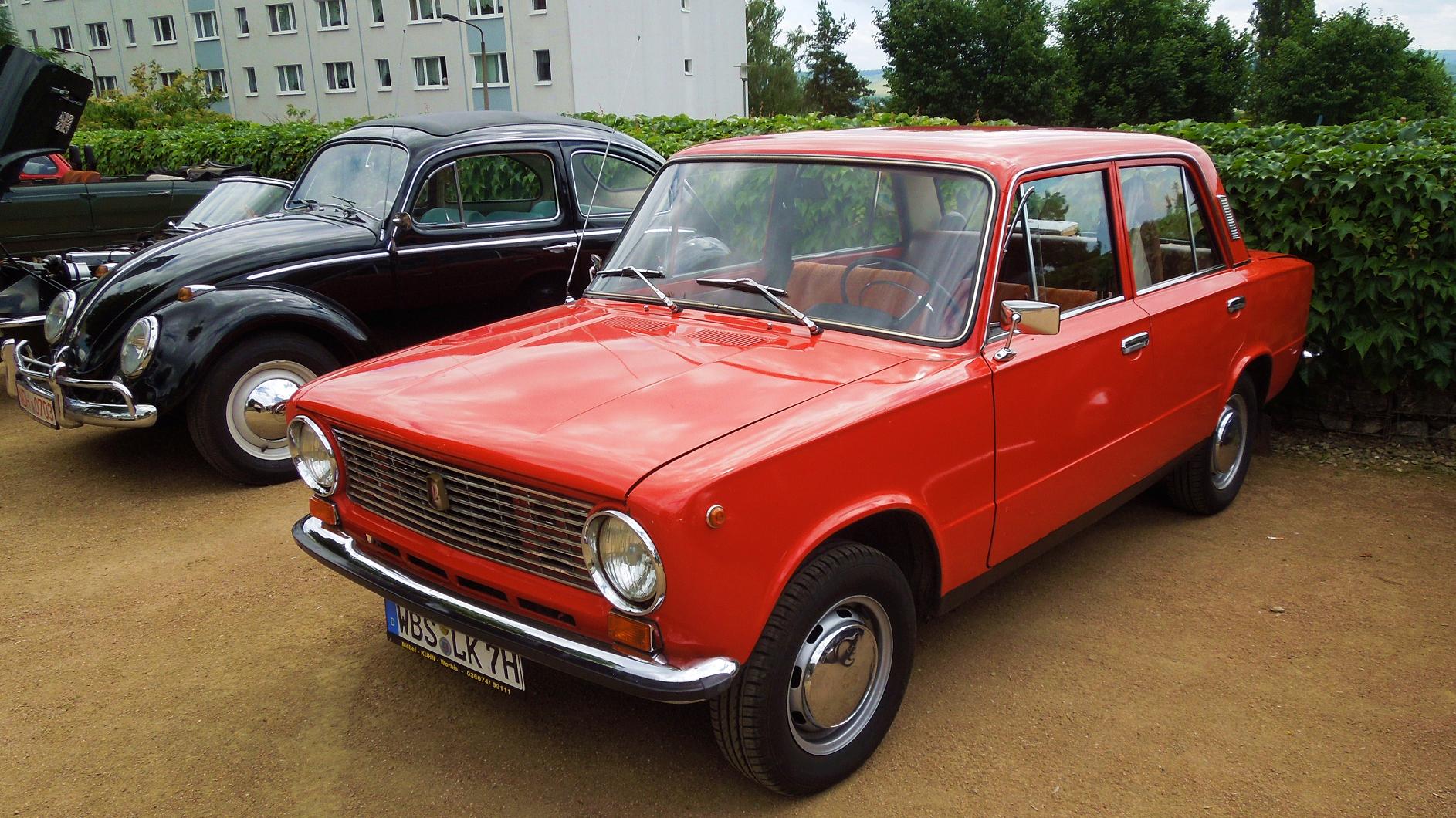
8. **Subaru 360 (North American version) (1968–70)**Ah, the Subaru 360. In its native Japan, it found success, but its journey to American shores was less about innovative design and more about a loophole. Entrepreneur Malcolm Bricklin, ever the opportunist, imported it to the US in 1968, largely because its feather-light weight exempted it from stringent American automotive safety standards. The marketing slogan, a brutally honest “Cheap and ugly does it!”, pretty much set the tone for what was to come for this, the first Subaru model sold in America.
Despite its low MSRP of $1,297, the 360 became a commercial failure in North America faster than you could say “lemon.” Car and Driver magazine, in a period review that didn’t pull any punches, called it one of the ugliest cars in history, further describing it as “the most bulbous bubble ever to putt-putt.” It seemed the only thing it did well was confirm preconceived notions about its appearance and performance.
But the criticism wasn’t just aesthetic; it was profoundly damning on safety grounds. Consumer Reports, a publication known for its rigorous evaluations, branded the 360 “unacceptably hazardous,” noting it as one of the worst vehicles they had ever tested. The facts were grim: a glacial 0–60 MPH acceleration time of 37.5 seconds, a dangerously structurally deficient performance in a 30 MPH crash test against a standard car, and bumpers that were “virtually useless against anything more formidable than a watermelon.” Their review concluded with a sentiment many owners likely shared: it “was a pleasure to squirm out of the [car], slam the door and walk away.”
Unsurprisingly, imports ceased in 1970, and unsold 360s lingered for years, leading to urban legends of them being crushed or even pushed into the ocean. While the 360’s failure was an embarrassing chapter, it’s worth noting that Subaru of America, against all odds, pressed on and eventually found incredible success, selling over 200,000 units a year by 2006. So, while the 360 was undoubtedly a ‘jerk car,’ it inadvertently paved the way for a brand that would eventually become a beloved automotive underdog.
Car Model Information: 2021 Subaru Crosstrek Base
Name: Subaru 360
Aka: Subaru 450
Manufacturer: Subaru
Production: 1958–1971
Assembly: Subaru#Manufacturing facilities,Ōta, Gunma
Class: Microcar
BodyStyle: Sedan (car),cabrio coach,station wagon
Engine: List of Subaru engines#Two Cylinder,List of Subaru engines#Two Cylinder,List of Subaru engines#Two Cylinder
Length: 117.7 in
Abbr: on
Disp: flip
Width: 51.2 in
Wheelbase: 70.9 in
Height: 54.3 in
Weight: 900 lb
Successor: Subaru R-2
Doors: Suicide doors
Layout: RR layout
Related: Subaru Sambar
Designer: Shinroku Momose
Categories: 1960s cars, 1970s cars, Articles with short description, Cars discontinued in 1971, Cars introduced in 1958
Summary: The Subaru 360 is a rear-engined, two-door city car manufactured and marketed by Subaru from 1958 to 1971. As the company’s first mass-produced automobile, production reached 392,000 over its 12-year model run.
Noted for its small overall size, 450 kg (1,000 lb) curb weight, monocoque construction, swing axle rear suspension, fiberglass roof panel, and rear-hinged doors, the inexpensive car was designed in response to the Japanese government’s light car or Kei car regulations and its proposal for a larger “national car,” both intended to help motorize the post WWII Japanese population. The 360’s overall size and engine capacity complied with Japan’s Kei car regulations.
Nicknamed the “ladybug” in Japan, and ultimately superseded by R-2, the 360 was one of Japan’s most popular cars and was available in a single generation in two-door, station wagon (“Custom”), “convertible” (a sedan with a roll-back fabric roof) and sporting variants. The two-door sedans’ model code is K111, while the wagon is known as K142. Ten thousand were sold in the United States, imported by Malcolm Bricklin and advertised as “Cheap and Ugly.”
The nameplate 360 derived from its tax-limited engine displacement: 356 cc.
Get more information about: Subaru 360
Buying a high-performing used car >>>
Brand: Subaru Model: 360
Price: $18,000 Mileage: 51,370 mi.
Read more about: Lemon or Legend? The Definitive Takedown of 15 Cars That Should Have Stayed on the Drawing Board
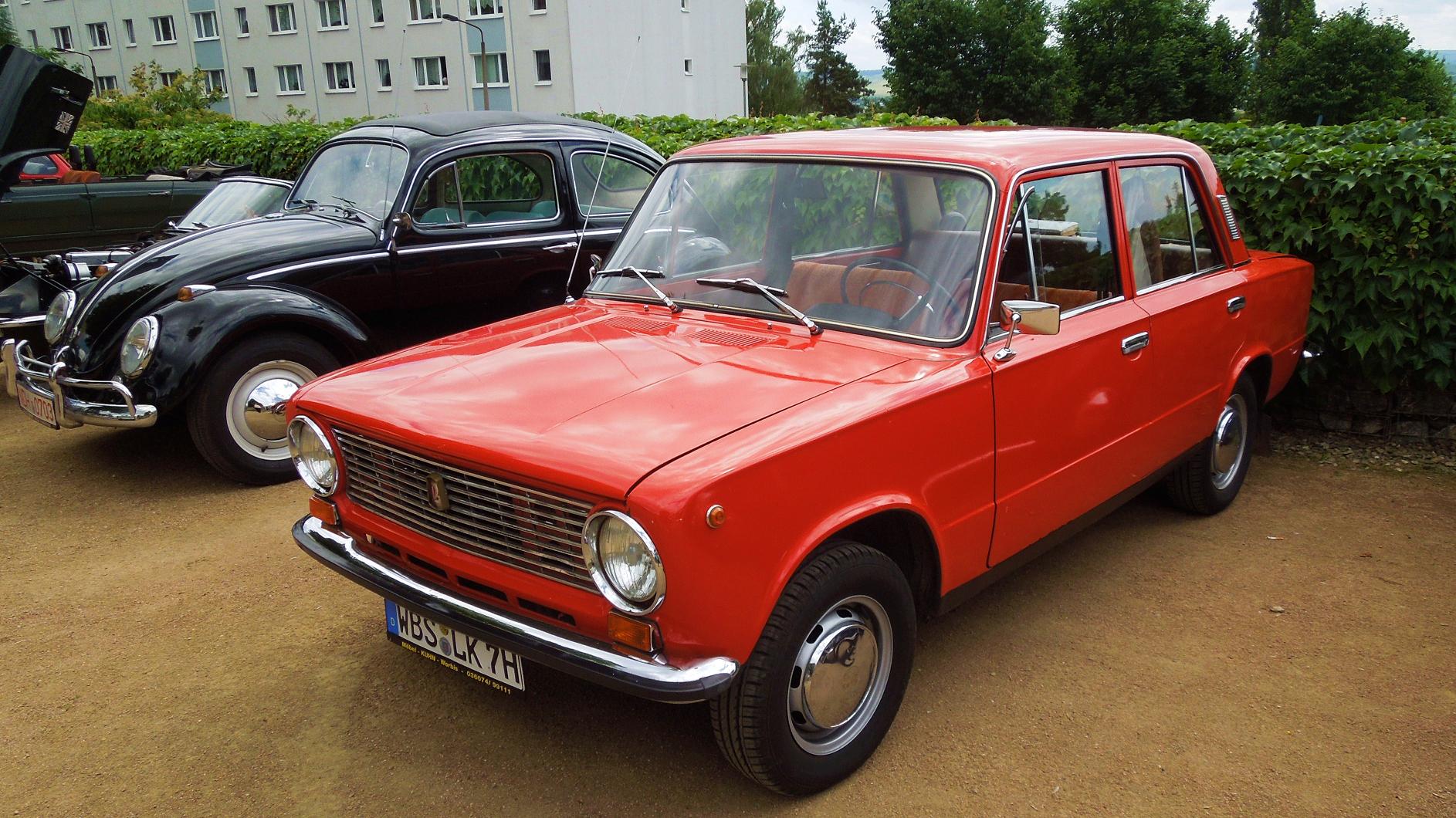
9. **VAZ-2101/Lada Riva/Zhiguli (1970–2013)**If you’ve ever wondered what it’s like to drive a car designed for an apocalypse, look no further than the VAZ-2101, known in export markets as the Lada Nova, Lada Riva, or simply Lada. A ruggedized version of the Fiat 124, produced in Russia, this vehicle received a strongly negative critical reception in most Western export markets. Why? Because it married an old-fashioned technical layout with build quality that, shall we say, left much to be desired.
Jeremy Clarkson, never one to mince words, famously declared it “simply the worst car in the world.” His colorful description painted a picture of pure automotive terror: “The steering column appeared to have been welded to the dashboard so that it wouldn’t turn. The brakes caused the car to speed up a bit and turn left, violently, at the same time.” He wasn’t done, adding that the dashboard buttons looked like they were installed by “Janet Ellis from Blue Peter,” and the engine seemed “plainly been lifted from a cement mixer that had spent the past 30 years chewing up rebel soldiers in southern Sudan.” This car sounded less like transportation and more like an active threat to personal safety.
Clarkson conceded that the Lada was “like a cockroach. It could survive a nuclear blast. It’s amazingly tough.” However, he quickly tempered that with, “It can stand up to hammer blows but not water.” The issue of fuel wasn’t overlooked either, with the engine designed to run on Russian petrol, “which had an octane rating of 76. That’s not really petrol. That’s spicy water.” Such vivid descriptions clearly highlight why this car earned its spot in books like Richard Porter’s “Crap Cars” and lists from The Sunday Times and The Telegraph, where it was branded “Poor to drive, uncomfortable and basic in the extreme.”
Sellyourproblemcar.com minced no words, calling it “an all-round disaster. Its poor tank-like handling, negligible engine performance and boxy design meant the Lada was already a thing of the past when it rolled off production in the 80s.” Despite its infamous reputation in the West, it was immensely popular in Soviet Russia, a true testament to necessity breeding acceptance. While updates like the Lada Riva and Nova saw some sales in the late 1980s, growing competition and emissions requirements forced Lada to withdraw from most Western European markets by 1997. Yet, it remains a cultural icon, proving that even a ‘jerk car’ can hold a special place in history.
Read more about: Lemon or Legend? The Definitive Takedown of 15 Cars That Should Have Stayed on the Drawing Board

10. **AMC Gremlin (1970–78)**In 1970, AMC decided to jump into the burgeoning American subcompact market with something… distinctive. They took a hacksaw to the rear of an AMC Hornet, and thus, the AMC Gremlin was born. The result was a car whose odd styling and out-of-date technology guaranteed it lasting derision, earning it a permanent spot on lists of automotive infamy, including Time magazine’s “50 worst cars of all time.”
Dan Neil’s assessment for Time captured the Gremlin’s aesthetic perfectly, stating that AMC designer Dick Teague’s team “basically whacked off the rear of the AMC Hornet with a cleaver. The result was one of the most curiously proportioned cars ever.” Beyond its peculiar looks, the Gremlin was “Cheap and incredibly deprived — with vacuum-operated windshield wipers, no less — the Gremlin was also awful to drive, with a heavy six-cylinder motor and choppy, unhappy handling due to the loss of suspension travel in the back.” The only upside was that it was quicker than some subcompacts, which “only meant you heard the jeers and laughter that much sooner.” Ouch.
CNN included the Gremlin on its list of “The Ten Most Questionable Cars of All Time,” noting it could be seen “as either a daring leap forward by an innovative underdog or as a desperate attempt to do something – anything – that would stand out in a marketplace dominated by larger competitors.” It certainly stood out, though perhaps not in the way AMC intended. It landed 4th on Car Talk’s “Worst Car of the Millennium” poll and was featured on CNBC’s list of the ten ugliest cars. Eric Peters, in “Automotive Atrocities! The Cars We Love to Hate,” perfectly described its “distinctive ‘What happened to the rest of your car, buddy?’ look” and lamented its archaic features like the lack of disc brakes, radial tires, and electric windshield wipers, which “hearkened back to the technologically sophisticated days of 1935.”
Edmunds.com didn’t pull any punches either, ranking the Gremlin as the 19th worst car of all time, unequivocally stating, “it runs second only to its brother the Pacer in Loserland.” The Gremlin, in all its curiously proportioned glory, became a rolling punchline, an enduring symbol of a company desperately trying to find its niche, and in doing so, creating a truly unforgettable ‘jerk car’ for the ages.
Read more about: Lemon or Legend? The Definitive Takedown of 15 Cars That Should Have Stayed on the Drawing Board
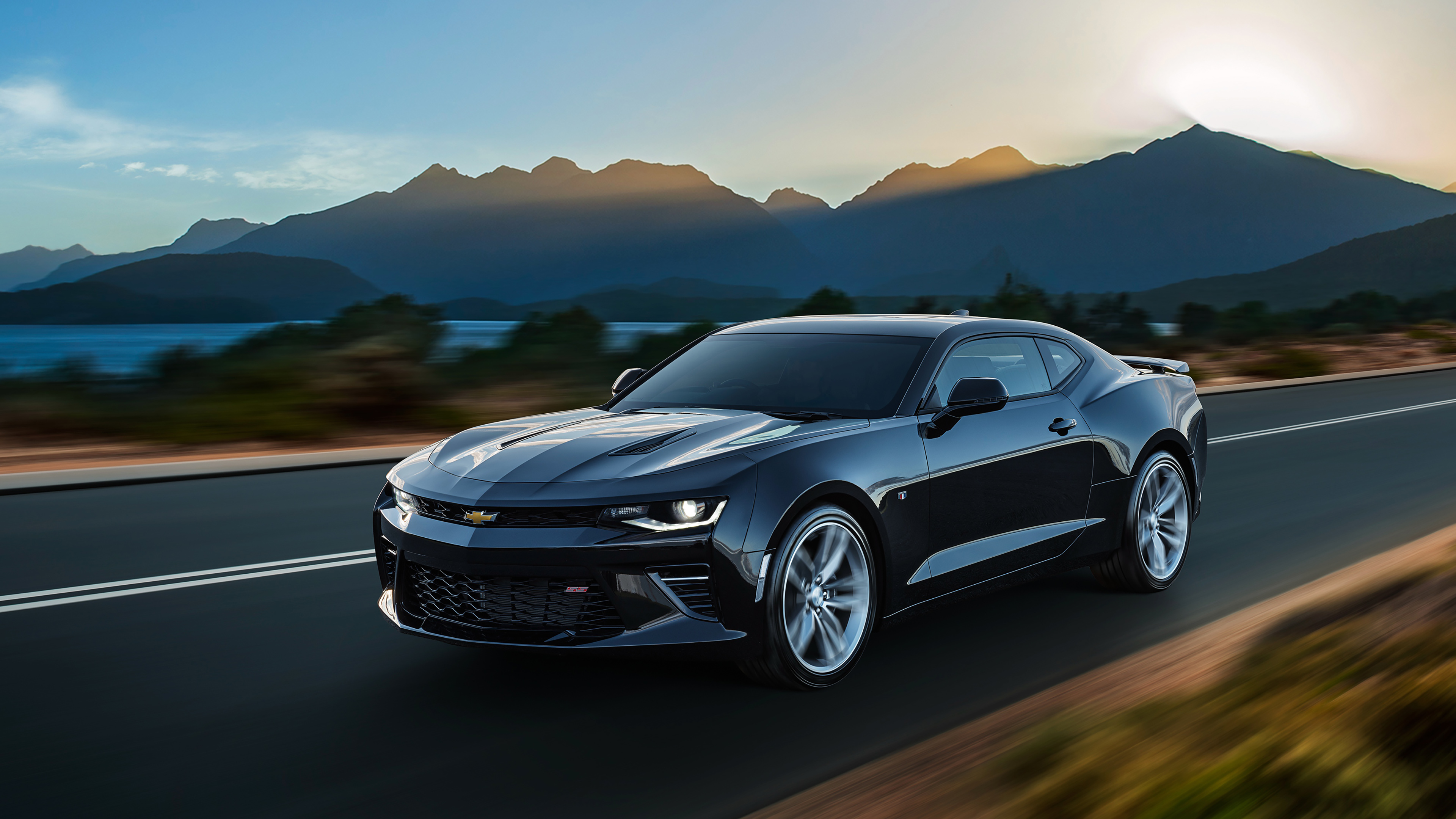
11. **Chevrolet Vega (1971–77)**The Chevrolet Vega burst onto the scene with a bang, initially earning critical acclaim and even being named Motor Trend Car of the Year for 1971. It quickly became a best-seller, seemingly poised to lead GM into the compact car era. However, this promising start quickly dissolved into a nightmare of severe quality and reliability issues that permanently damaged its reputation. What was once praised as innovative, like its aluminum block engine and new rustproofing method, proved to be its Achilles’ heel.
The Vega was shockingly vulnerable to corrosion and premature engine failure, leading to a startling statistic: by the late 1970s, these cars were being scrapped at such a high rate that many junkyards refused to purchase them. Autoblog, without hesitation, included the Vega on its list of “The 20 Dumbest Cars of All Time,” concluding that it “proved the point that American car makers did not make good small cars.” It secured the 2nd spot on Car Talk’s “Worst Car of the Millennium” poll and made Forbes’ “The Worst Cars of All Time” list, with Car and Driver brutally stating, “It seemed the only time anyone saw a Vega on the road not puking out oily smoke was when it was being towed.”
Popular Mechanics listed the Vega among “10 Cars That Damaged GM’s Reputation” and, marking its 40th anniversary, identified it as the catalyst that sent General Motors spiraling towards its 2009 bankruptcy. They highlighted the sheer scale of the problem: “Since the Vega sold so strongly (almost 2 million were built before it left production after 1977), the result was that literally hundreds of thousands of buyers were having awful experiences with the car. Surely, those customers were then far more willing to consider the Japanese alternatives that were starting to arrive.” This ‘jerk car’ didn’t just fail; it actively drove customers into the arms of the competition.
The Truth About Cars minced no words, naming the Vega as one of the “deadly sins” that led to GM’s downfall, calling it “GM’s Watergate/Waterloo, the beginning of the inevitable end.” Former GM executive John DeLorean even dedicated an entire chapter in his 1979 book to the Vega, revealing that GM knew about its glaring quality problems well before its launch. Edmunds.com cemented its legacy, ranking the Vega as the 5th worst car of all time. This wasn’t just a bad car; it was a corporate catastrophe on wheels, a true ‘jerk car’ of epic proportions.
Car Model Information: 1976 Chevrolet Vega
Name: Chevrolet Vega
Caption: 1971 Chevrolet Vega
Aka: Vega 2300
Manufacturer: Chevrolet
Production: 1970–1977
ModelYears: 1971–1977
Assembly: Lordstown, Ohio
Predecessor: Chevrolet Corvair
Successor: Chevrolet Monza
Class: Subcompact car
BodyStyle: notchback,hatchback,station wagon,Panel van
Layout: FR layout
Platform: GM H platform (RWD)
Engine: {{cvt,2.3,L,cuin,0,Chevrolet 2300 engine
Transmission: manual transmission,4-speed manual,overdrive (mechanics),Torque-Drive 2-speed Powerglide requiring manual shifting,Powerglide,Turbo-Hydramatic
Wheelbase: cvt
Length: cvt
Width: cvt
Height: cvt
Weight: cvt
Related: Pontiac Astre,Chevrolet Monza,Pontiac Sunbird#First generation (1976–1980),Buick Skyhawk#First generation (1975–1980),Oldsmobile Starfire#Second generation (1975–1980)
Designer: Bill Mitchell (designer)
Categories: 1970s cars, All articles needing additional references, All articles with unsourced statements, Articles needing additional references from July 2023, Articles with short description
Summary: The Chevrolet Vega is a subcompact automobile manufactured and marketed by GM’s Chevrolet division from 1970 until 1977. Available in two-door hatchback, notchback, wagon, and sedan delivery body styles, all models were powered by an inline four-cylinder engine designed specifically for the Vega, with a lightweight aluminum alloy cylinder block. The Vega first went on sale in Chevrolet dealerships on September 10, 1970. Variants included the Cosworth Vega, a short-lived limited-production performance version introduced spring 1975.
The Vega received the 1971 Motor Trend Car of the Year. Subsequently, the car became widely known for a range of problems related to its engineering, reliability, safety, propensity to rust, and engine durability. Despite numerous recalls and design upgrades, Vega’s problems tarnished its reputation and that of General Motors. Production ended with the 1977 model year.
The car was named for Vega, the brightest star in the constellation Lyra.
Get more information about: Chevrolet Vega
Buying a high-performing used car >>>
Brand: Chevrolet Model: Vega
Price: $30,000 Mileage: 82,344 mi.
Read more about: Lemon or Legend? The Definitive Takedown of 15 Cars That Should Have Stayed on the Drawing Board

12. **Ford Pinto (1971–80)**The Ford Pinto was, by many measures, a strong seller that received a decent reception when it first hit the market. It was Ford’s answer to the compact car craze, and it moved units. However, its reputation was irrevocably stained by a horrifying accusation: that the car could erupt into flames upon being rear-ended, all thanks to a critically defective fuel tank design. This wasn’t just speculation; it was fueled by a corporate document that became automotive legend.
The infamous “Pinto memo,” submitted to the NHTSA, examined the societal costs of new roll-over legislation. When this document was presented to the public, it was interpreted as proof that Ford executives were aware of the design defect and, after calculating that paying off lawsuits would be cheaper than reengineering the car, chose to do nothing. This revelation ignited public outrage, turning a mere design flaw into a symbol of corporate callousness.
Time magazine didn’t hesitate to include the Pinto on its list of the “50 worst cars of all time.” Automotive journalist Dan Neil summed it up bluntly: “They shoot horses, don’t they? Well, this is fish in a barrel. Of course the Pinto goes on the Worst list, but not because it was a particularly bad car – not particularly – but because it had a rather volatile nature. The car tended to erupt in flame in rear-end collisions.” CNN echoed this sentiment, noting, “Images of flaming Pintos are so seared into the public consciousness that it’s probably hard for most people, unaided by a photograph, to conjure a mental image of the car while not on fire.”
The Ford Pinto’s notoriety was so profound that Autoblog ranked it #1 on its list of “The 20 Dumbest Cars of All Time.” It also snagged third place in Car Talk’s 2000 “Worst Car of the Millennium” survey and was ranked the 16th worst car of all time by Edmunds.com. While it might not have been “intrinsically bad” in every mechanical aspect, the undeniable safety defect and the resulting ethical firestorm earned the Pinto a permanent, fiery spot on our ‘jerk car’ roster, a stark reminder of the devastating consequences of prioritizing profit over safety.
Car Model Information: 1980 Ford Pinto WAGON
Name: Ford Pinto
Caption: Ford Pinto
Manufacturer: Ford Motor Company
Aka: Mercury Bobcat
Production: September 1970 – July 1980
ModelYears: 1971–1980 (Pinto),1974–1980 (Bobcat)
Assembly: Edison, New Jersey,Milpitas, California
Designer: Robert Eidschun (1968)
Class: Subcompact car
BodyStyle: Sedan (automobile),sedan delivery,station wagon,hatchback
Related: #Mercury Bobcat (1974–1980),Ford Mustang (second generation)
Layout: Front-engine, rear-wheel-drive layout
Chassis: Unibody
Engine: unbulleted list
Abbr: on
Disp: Ford Cologne engine
Transmission: unbulleted list
Wheelbase: 94.0 in
Length: 163 in
Width: 69.4 in
Height: 50 in
Weight: convert
Predecessor: Ford Cortina#Mark II (1966–1970)
Successor: Ford Escort (North America)
Categories: 1980s cars, Articles with short description, Cars discontinued in 1980, Cars introduced in 1970, Commons category link from Wikidata
Summary: The Ford Pinto is a subcompact car that was manufactured and marketed by Ford Motor Company in North America from 1970 until 1980. The Pinto was the first subcompact vehicle produced by Ford in North America.
The Pinto was marketed in three body styles throughout its production: a two-door fastback sedan with a trunk, a three-door hatchback, and a two-door station wagon. Mercury offered rebadged versions of the Pinto as the Mercury Bobcat from 1975 until 1980 (1974–1980 in Canada). Over three million Pintos were produced over its ten-year production run, outproducing the combined totals of its domestic rivals, the Chevrolet Vega and the AMC Gremlin. The Pinto and Mercury Bobcat were produced at Edison Assembly in Edison, New Jersey, St. Thomas Assembly in Southwold, Ontario, and San Jose Assembly in Milpitas, California.
Since the 1970s, the safety reputation of the Pinto has generated controversy. Its fuel-tank design attracted both media and government scrutiny after several deadly fires occurred when the tanks ruptured in rear-end collisions. A subsequent analysis of the overall safety of the Pinto suggested it was comparable to other 1970s subcompact cars. The safety issues surrounding the Pinto and the subsequent response by Ford have been cited widely as business ethics and tort reform case studies.
Get more information about: Ford Pinto
Buying a high-performing used car >>>
Brand: Ford Model: Pinto
Price: $5,951 Mileage: 107,000 mi.
Read more about: Lemon or Legend? The Definitive Takedown of 15 Cars That Should Have Stayed on the Drawing Board

13. **Morris Marina (1971–80)**British Leyland’s Morris Marina, launched in April 1971, arrived with a mandate: urgently replace a slew of outdated saloon models and directly compete with the highly successful MkII Ford Cortina. The problem? From its inception, the Marina was criticized for its poor performance, styling, handling, and crucially, its build quality. This wasn’t a car built for the future; it was a car built from the past, reusing mechanical parts like a front suspension from the 1948 Morris Minor, engines from the early 1950s, and a gearbox and axle dating back to 1962.
Designed and developed on a shoestring budget and an incredibly tight timescale—less than three years from concept to full production—the Marina was always a stop-gap. Unfortunately for British Leyland, Ford immediately upped the ante in October 1970 by releasing the larger, more upmarket, and sophisticated MkIII Cortina, making the Marina seem dated even before it truly began. Early cars even had a design flaw in their front suspension that caused dangerous handling, though this was thankfully corrected before full-scale sales commenced. Still, the underlying issues persisted, leading to widespread criticism for its poor handling, road holding, and overall refinement. The Daily Telegraph rightly included the Marina on its list of “10 Cars That Should Have Never Been Produced.”
British motoring journalist Jeremy Clarkson has made the Marina a regular target for his comedic assaults. On “Clarkson’s Car Years,” he famously compared it to the Austin Allegro to determine which was worse, and on his DVDs, he gleefully blew up a Marina in an automotive game of bar skittles. His verbal jabs were just as potent, calling its rear suspension a relic that “dates back to a medieval hand cart” and lamenting that its “40 million pounds to develop… since it was meant to be hopeless, was too much.” Destroying Marinas became a running gag on Top Gear, to the dismay of enthusiasts, with presenter James May even suggesting at least one should be preserved in a museum as “a warning from history.”
CarThrottle ranked it #1 on its list of “10 Of The Worst Cars Ever Made In The UK,” yet, against all odds and criticisms, the Marina was one of Britain’s best-selling cars throughout its production life. It even peaked at second place in sales in 1973, behind only the Cortina. Over 1.2 million Marinas were built in total, making it British Leyland’s second-best-selling car after the Mini. This bizarre duality—being both an object of ridicule and a commercial success—cemented the Morris Marina’s place as a truly perplexing ‘jerk car’ that endured despite (or perhaps because of) its numerous flaws.
Read more about: Lemon or Legend? The Definitive Takedown of 15 Cars That Should Have Stayed on the Drawing Board
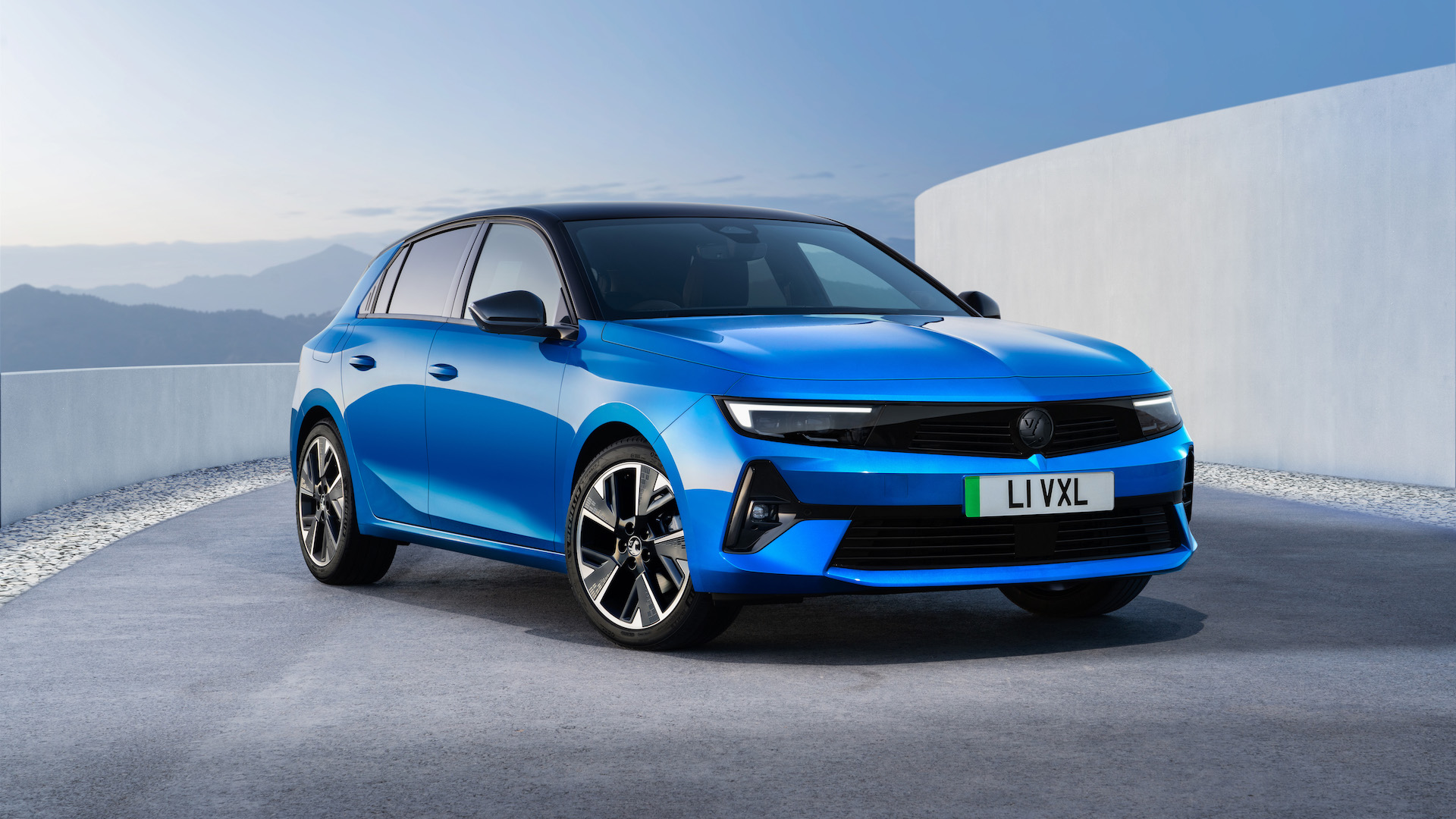
14. **Vauxhall HC Viva “Firenza” (Canada) (1971–73)**In the 1960s, General Motors Canada sought to compete with popular imported compacts like the Volkswagen Beetle and Toyota Corolla by bringing in Vauxhall models from the UK. By the time the Vauxhall HC Viva arrived, it was rebranded the “Firenza” for the Canadian market. This name change was a desperate attempt to both respond to the previous generation’s quality problems and to cleverly hide its British origins. Spoiler alert: it didn’t work.
The Firenza was utterly plagued with quality problems, a situation exacerbated by a dire lack of spare parts, largely due to frequent labor strikes in the UK at the time. Drivers faced a litany of common issues, including dangerous brake failure and terrifying engine fires. This wasn’t just a car with a few quirks; it was a bona fide safety hazard and a perpetual headache for owners.
The outrage among consumers was so profound that in 1972, angry Firenza owners united to form the “Dissatisfied Firenza Owners Association.” They engaged in very public demonstrations to expose the car’s pervasive quality problems and demand compensation from General Motors for their repair costs and the car’s plummeting depreciation. The Firenza became so toxic on the used car market that even one-year-old models with low mileage were worth less than a quarter of their original price, and predictably, dealerships outright refused to take them as trade-ins. In a shocking display of automotive dissent, two Firenzas even caught fire during a 32-car protest outside of the Canadian House of Commons.
The widespread protests, coupled with tragic reports of a 19-year-old woman dying in an accident caused by her Firenza’s steering failing, prompted direct intervention from the Canadian government. General Motors, in a masterclass of corporate denial, initially denied the problems and tried to salvage the Firenza’s image through deceptive marketing, but it was too little, too late. They finally withdrew the car from the Canadian market in early 1973. The legal fallout was significant: the Disaffected Firenza Owners Association attempted to sue GM, and Canada’s lack of class-action lawsuit laws at the time actually prompted Prime Minister Pierre Trudeau to oversee their creation. Curbside Classic argued that this debacle, combined with the HC Viva’s poor reception globally, was responsible for Vauxhall losing its autonomy, making the Firenza “the worst car Canada ever saw” and its equivalent of Ralph Nader’s Corvair scandal.
Read more about: Lemon or Legend? The Definitive Takedown of 15 Cars That Should Have Stayed on the Drawing Board

15. **Reliant Robin/Rialto (1973–2002)**And now, for our final entry, a vehicle so uniquely British and so famously peculiar that it has transcended mere automotive status to become a pop culture icon: the Reliant Robin. This three-wheeled small car is perhaps the best-known and most infamous product of Britain’s once-thriving three-wheeled car industry. Its initial success wasn’t due to groundbreaking engineering, but rather shrewd exploitation of British tax loopholes that allowed three-wheeled cars to be taxed as motorcycles and driven with a motorcycle license, making them incredibly affordable and accessible.
The Robin enjoyed sales success throughout its remarkably long lifetime and undeniably holds a special, albeit often humorous, place in British culture. Its name was so powerful that when its successor, the Reliant Rialto, was launched in 1982, it was eventually renamed Robin in 1989, effectively extending the legendary nameplate for another thirteen years. This allowed the Robin to roll well into the new millennium, with production finally ceasing in 2002. Yet, despite its commercial longevity and cultural penetration, it became the butt of countless jokes, owing to its distinctive three-wheeled nature, fiberglass bodyshell, and decidedly primitive, old-fashioned technical layout. Affectionately, and somewhat derisively, nicknamed the “Plastic Pig,” its unique shape and construction made it instantly recognizable.
No discussion of the Reliant Robin would be complete without mentioning its infamous appearance on the BBC series Top Gear (series 15, episode 1). In a segment that perfectly cemented its comedic legacy, Jeremy Clarkson embarked on a perilous drive, making the Robin roll over multiple times, seemingly with every turn of the wheel. His candid assessment was scathing: he described driving it as dangerous as “inviting your mum ’round for an evening on Chatroulette,” and unequivocally stated that the Robin “wasn’t funny, it was a complete menace.” The sheer instability and the hilarity (and danger) of its driving dynamics became a memorable moment in television history, further embedding the Robin into the global consciousness as a car that simply couldn’t take itself seriously, and neither could anyone else.
Despite the constant ridicule and its objectively precarious nature, the Reliant Robin’s enduring presence and surprising sales success speak volumes about its unique niche and unwavering cultural impact. It embodies a certain eccentric charm, a testament to British ingenuity and quirkiness that, against all odds, kept it on the roads for decades. It’s a ‘jerk car’ in the most endearing sense, a symbol of automotive imperfection that, for better or worse, will never be forgotten.
And there you have it, folks – a deep dive into the illustrious, often agonizing, and always opinion-splitting world of ‘jerk cars.’ We’ve journeyed through decades of automotive ambition gone awry, from post-war luxury misfires to engineering blunders that sparked national safety debates, and even humble economy cars that dissolved before their time. These aren’t just machines that failed; they are cautionary tales, engineering puzzles, and sometimes, even unlikely cult heroes.
Read more about: Gear Grinders and Road Rogues: Unmasking the 1970s’ Most Hated Cars That Still Haunt Our Automotive Dreams
Each of these vehicles, in its own infamous way, contributed to the rich tapestry of automotive history, proving that even the most reviled models can leave a lasting impact – whether on design principles, safety regulations, or simply the collective memory of every driver who ever had the misfortune (or the peculiar joy) of encountering one. They’ve taught us valuable lessons, often at the expense of their manufacturers’ reputations and their owners’ sanity. So, the next time you hear a collective groan about a particular car, remember these legends. They’re not just bad cars; they’re bona fide ‘jerk cars,’ and their stories are truly unforgettable.

